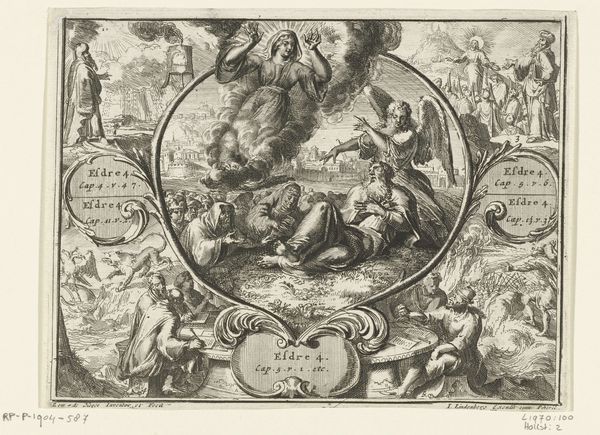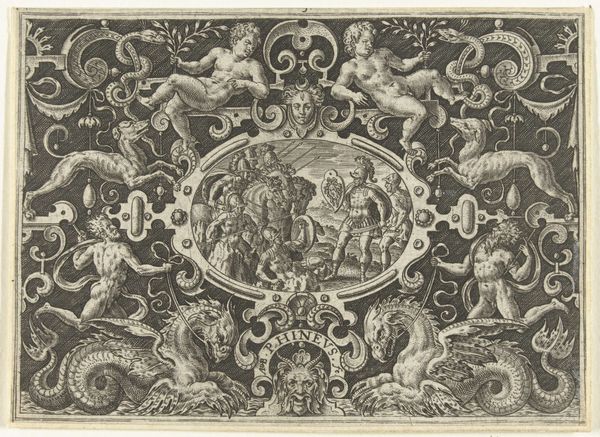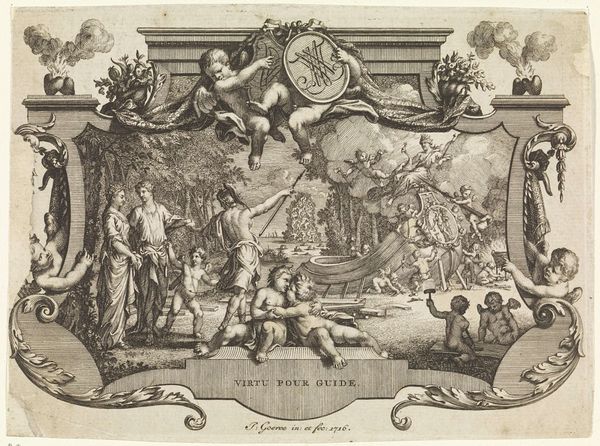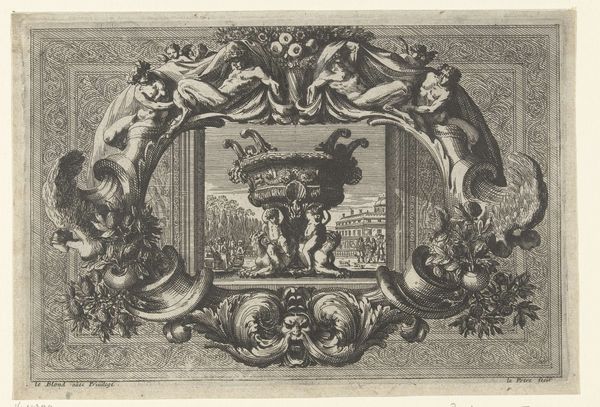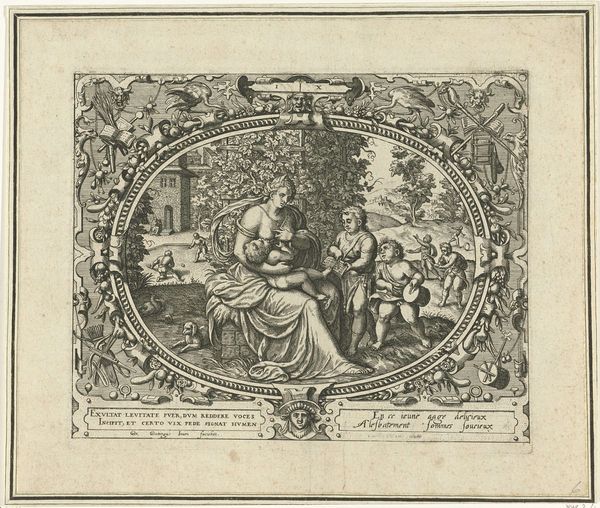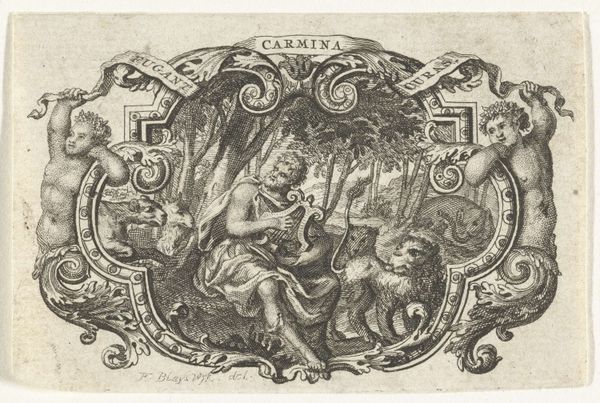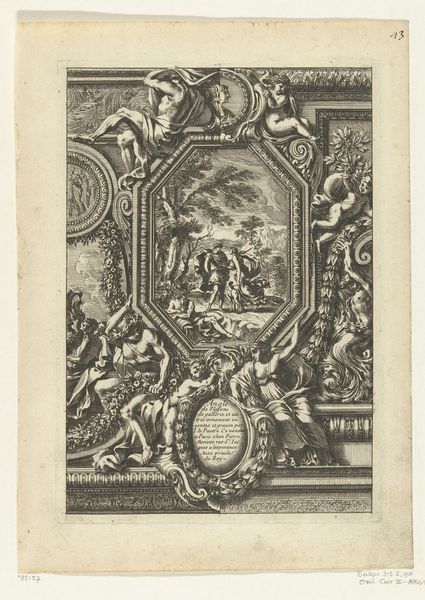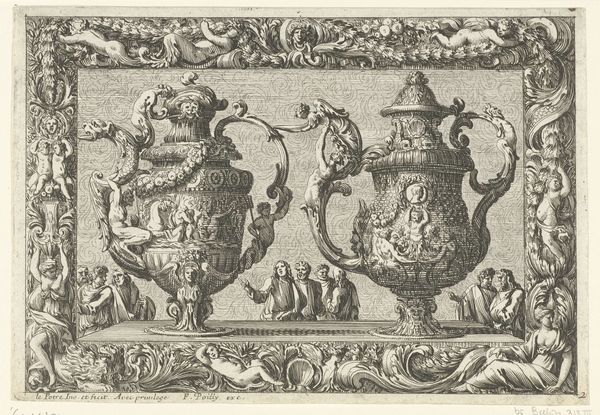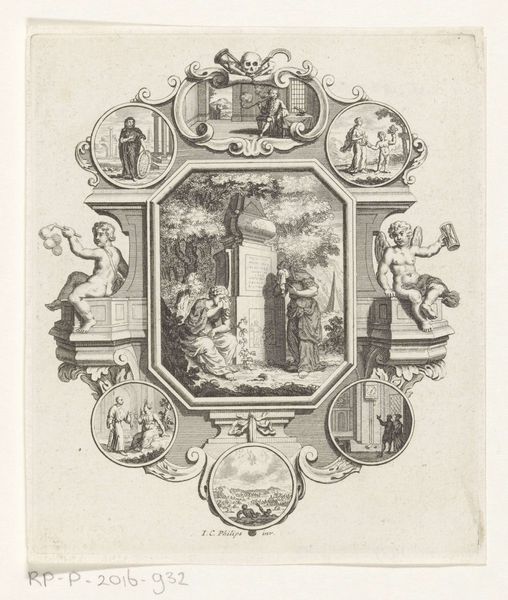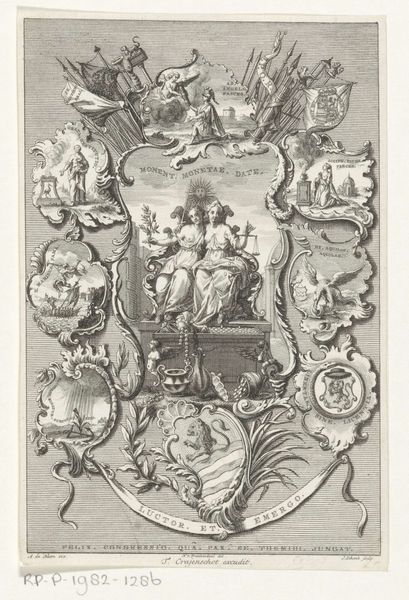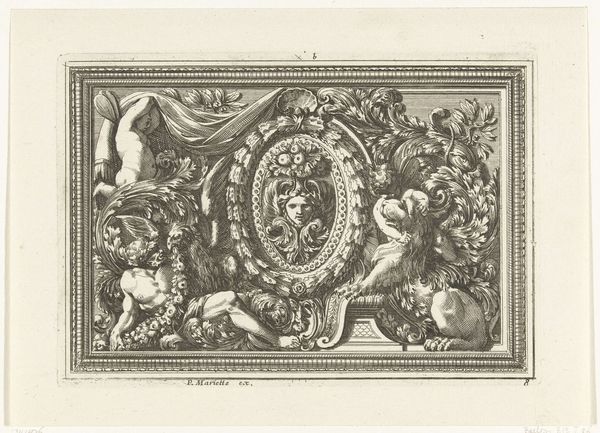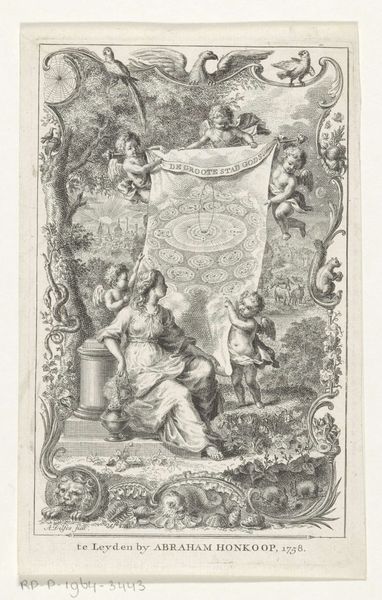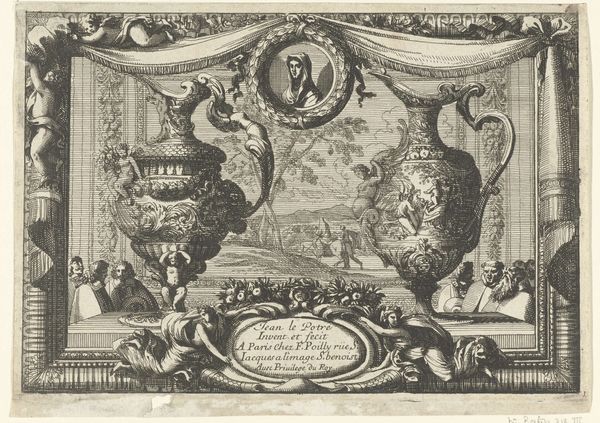
print, engraving
# print
#
landscape
#
figuration
#
ink line art
#
11_renaissance
#
mythology
#
line
#
northern-renaissance
#
engraving
Dimensions: height 89 mm, width 122 mm
Copyright: Rijks Museum: Open Domain
Curator: This intricate engraving, made in 1584 by Abraham de Bruyn, is titled "Cartouche: Atlas door Perseus in een berg veranderd," which translates to "Cartouche: Atlas Turned into a Mountain by Perseus." Editor: What a fantastical scene! The overall feeling is ornate, powerful, almost overwhelming. It really speaks to a world teeming with mythical beings and dramatic transformations. Curator: Indeed. The piece, crafted with remarkable detail using an engraving technique, features a central oval scene depicting the myth of Perseus transforming Atlas into a mountain. Framing this vignette is an elaborate cartouche filled with grotesque figures, flora, and fauna. This interplay speaks to the late Renaissance fascination with classical themes reworked through the lens of Mannerist sensibility. Editor: I'm particularly drawn to the depiction of power dynamics at play here. Atlas, often symbolized as burdened by the world, becomes literally petrified, arguably imprisoned, while Perseus’ action illustrates a conquering, masculine authority typical of its time. How does this visual language connect with sociopolitical hierarchies? Curator: Excellent question. De Bruyn’s choices clearly reflect a society grappling with its own hierarchies. The artist's attention to the rendering of musculature and mythological props is evidence of careful modeling from historical sources, but is inevitably colored with late Renaissance ideologies, including notions of masculine dominance and conquest. The printing process itself makes the work more accessible to the emerging middle class and facilitates dissemination of these themes to a wider public. Editor: I also see some parallels to how landscapes were, and are, frequently depicted as both sublime and exploitable by outside forces. Considering how the artist depicts labor – with Atlas’ forced, eternal bearing of the world reduced to stone, versus the triumphant stance of Perseus – makes one ponder the consumption and objectification inherent in these power imbalances. Curator: That's a key observation! Thinking about it materially, the engraving itself reproduces quickly and cheaply; it flattens out a myth into an easily accessed piece for bourgeois consumption, removing agency and simplifying complexities of mythological themes. Editor: The level of allegory is remarkable. It provides a telling snapshot into both artistic and cultural values from that period. Curator: Agreed. By looking at how labor, form, and production intertwine, we’ve hopefully unveiled some richer layers to its meaning for our visitors.
Comments
No comments
Be the first to comment and join the conversation on the ultimate creative platform.
